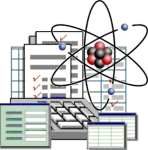44 P. “Clusters in Nuclei”, Lecture Notes in Physics, vol. 3, 2012, Springer These lecture notes present the capabilities of relativistic nuclear physics for the development of the physics of nuclear clusters. Nuclear track emulsion continues to be an effective technique for pilot studies that allows one, in particular, to study the cluster dissociation of a wide variety of light relativistic nuclei within a common approach. Despite the fact that the capabilities of the relativistic fragmentation for the study of nuclear clustering were recognized quite a long time ago, electronic experiments have not been able to come closer to an integrated analysis of ensembles of relativistic fragments. The continued pause in the investigation of the "fine" structure of relativistic fragmentation has led to resumption of regular exposures of nuclear emulsions in beams of light nuclei produced for the first time at the Nuclotron of the Joint Institute for Nuclear Research (JINR, Dubna). To date, an analysis of the peripheral interactions of relativistic isotopes of beryllium, boron, carbon and nitrogen, including radioactive ones, with nuclei of the emulsion composition, has been performed, which allows the clustering pattern to be presented for a whole family of light nuclei. В этих лекционных заметках представлены возможности релятивистской ядерной физики для развития физики ядерных кластеров. Ядерная эмульсия остается эффективной методикой для поисковых исследований, в частности, позволяя изучать кластерную диссоциацию широкого разнообразия легких релятивистских ядер в едином подходе. Несмотря на то, что возможности релятивистской фрагментации для изучения ядерной кластеризации были осознаны достаточно давно, электронные эксперименты не смогли приблизиться к целостному анализу ансамблей релятивистских фрагментов. Продолжающаяся пауза в отношении исследования «тонкой» структуры релятивистской фрагментации привела к возобновлению последовательного облучения ядерной эмульсии на впервые формировавшихся пучках легких ядер нуклотрона ОИЯИ. К настоящему времени выполнен анализ периферических взаимодействий релятивистских изотопов бериллия, бора, углерода и азота, в том числе радиоактивных с ядрами из состава эмульсии, что позволяет представить картину кластеризации в целом семействе легких ядер. |



